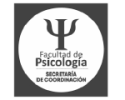
«The biosensor is an instrument that converts the concentration of biomarkers into electrical signals for detection. Biosensing technology is non-invasive, lightweight, automated, and biocompatible in nature. These features have significantly advanced medical diagnosis, particularly in the diagnosis of mental disorder in recent years. The traditional method of diagnosing mental disorders is time-intensive, expensive, and subject to individual interpretation. It involves a combination of the clinical experience by the psychiatrist and the physical symptoms and self-reported scales provided by the patient. Biosensors on the other hand can objectively and continually detect disease states by monitoring abnormal data in biomarkers. Hence, this paper reviews the application of biosensors in the detection of mental diseases, and the diagnostic methods are divided into five sub-themes of biosensors based on vision, EEG signal, EOG signal, and multi-signal. A prospective application in clinical diagnosis is also discussed.»
Emerging VR applications, which are intended for navigation and orientation, cognitive and memory functions, facial identification, and other instrumental activities of daily life, have exhibited practical uses in neuropsychological assessments (García-Betances et al., 2015). Compared with the three methods mentioned in Section 3.1 and Section 3.3, more kinds of mental disease can be diagnosed through VR. VR transmits information from real life to the virtual world, providing the possibility for people to perform activities in the virtual space (Goharinejad et al., 2022). From a research perspective, the use of VR allows for the repetition of clinical practice and continuous data collection in a virtual world (Tieri et al., 2018), and provides excellent visual and auditory immersion and interaction during tasks (Climent et al., 2021). According to different degrees of immersion, VR can be divided into fully immersive, semi-immersive and non-immersive. Fully immersive VR devices are typically equipped with head-mounted displays (HMDs), data gloves, gesture control armbands, gamepads, and speakers (Figure 6), placing participants inside a virtual environment for the highest level of immersion. Semi-immersive VR presents a visual virtual environment through a relatively large flat-screen display. In non-immersive systems, participants interact using traditional PC monitors, keyboards, and mice (Kim et al., 2009; Anthes et al., 2016; Mehrfard et al., 2019; Yeung et al., 2021).
Zheng Y, Liu C, Lai NYG, Wang Q, Xia Q, Sun X and Zhang S (2023) Current development of biosensing technologies towards diagnosis of mental diseases. Front. Bioeng. Biotechnol. 11:1190211. doi: 10.3389/fbioe.2023.1190211












Este proyecto ha recibido financiación de la Unión Europea del programa de investigación e innovación
Horizon 2020 bajo el acuerdo Nº 733901
© 2025 Nesplora S.L.
New Nesplora online application
Nesplora
desktop application
New Nesplora online application
Nesplora
desktop application